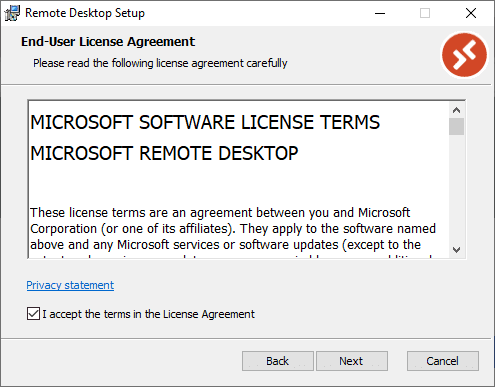

Use this guidance to help secure Remote Desktop Services

Firewall rules may be labeled as “Remote Desktop” or “Terminal Services.” The default port for Remote Desktop Services is TCP 3389, but sometimes an alternate port of TCP 3388 might be used if the default configuration has been changed. To identify whether your company is using the Remote Desktop Protocol, you may perform an audit and review of firewall policies and scan internet-exposed address ranges and cloud services you use, to uncover any exposed systems. The Microsoft Remote Desktop Services gateway uses Secure Sockets Layer (SSL) to encrypt communications and prevents the system hosting the remote desktop protocol services from being directly exposed to the public internet.

Some of these considerations can be addressed using Microsoft Remote Desktop Services to act as a gateway to grant access to remote desktop systems.

Controlling, auditing, and logging remote access.Internal lateral movement after initial compromise.
#Azure remote desktop client Patch#
Vulnerability and patch management of exposed systems.Direct accessibility of systems on the public internet.Security considerations for remote desktop include: In addition, there are challenges with being able to configure security for RDP sufficiently, to restrict a cybercriminal from moving laterally and compromising data.
#Azure remote desktop client install#
One of these challenges is that attackers continue to target the RDP and service, putting corporate networks, systems, and data at risk ( e.g., cybercriminals could exploit the protocol to establish a foothold on the network, install ransomware on systems, or take other malicious actions). A surprising finding from John’s research is the ongoing prevalent usage of RDP and its exposure to the internet.Īlthough Remote Desktop Services (RDS) can be a fast way to enable remote access for employees, there are a number of security challenges that need to be considered before using this as a remote access strategy. Notably, there has been an increase in the number of systems accessible via the traditional Remote Desktop Protocol (RDP) port and a well-known “alternative” port used for RDP. Recently, John Matherly (founder of Shodan, the world’s first search engine for internet-connected devices) conducted some research on ports that are accessible on the internet, surfacing some important findings. Companies that couldn’t make changes rapidly enough to increase capacity for remote workers might rely on remote access using the remote desktop protocol, which allows employees to access workstations and systems directly. Many companies were forced to enhance their capabilities to allow remote workers access to systems and applications from their homes and other locations outside the network perimeter.


 0 kommentar(er)
0 kommentar(er)
